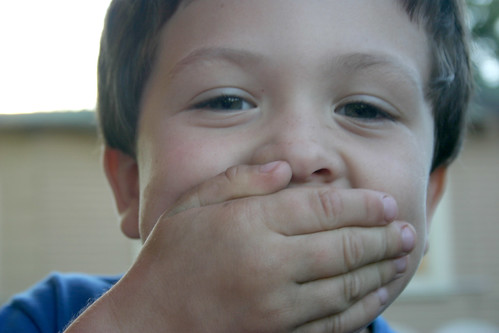Improving Pronunciation in Your ESL Students
Improving Pronunciation in Your ESL Students
We’ve all experienced the frustration of talking to someone who clearly has a good working knowledge of English but still seems almost unintelligible. Maybe you’ve been that person, too, struggling to master the unfamiliar sounds of a foreign language.
Although many of the kids you teach in your ESL classes will pick up on pronunciation a lot quicker than adults, you’ll still find that there is a lot of work you have to do as a teacher to make sure that they are pronouncing certain difficult sounds right. Here are some things to keep in mind as you are planning your lessons to help your students pronunciation improve.
Although many of the kids you teach in your ESL classes will pick up on pronunciation a lot quicker than adults, you’ll still find that there is a lot of work you have to do as a teacher to make sure that they are pronouncing certain difficult sounds right. Here are some things to keep in mind as you are planning your lessons to help your students pronunciation improve.
Exaggerate your own pronunciation
Allowing students to very clearly hear how you are saying a word is crucial to them learning how to pronounce it. What is going to help them even more is actually seeing what you are doing with your mouth to make the sound.
Exaggerating the shape of your mouth while you are saying certain difficult sounds can help your students understand and mimic what they need to do to make the sounds.
Encourage them to mimic you, and if the exaggeration and mimicry gets to the point of laughter, so much the better – the more fun kids are having, the more they will loosen up and be willing to make goofy mouth shapes and sounds themselves, and that’s going to be a big step in overcoming those pronunciation barriers.
Know what they will struggle with
If you know the sticking points that they are going to hit with pronunciation, you can plan time into your lessons to work on it right from the get-go.
Be prepared with pronunciation drills and practice to make sure that you thoroughly cover those common problem sounds right from the beginning, and you will give your students a much more solid foundation for their pronunciation.
Particular sounds that students will struggle with will vary from country to country, depending on what their native language is. Listen to other ESL speakers in the area and hear what sounds they commonly mispronounce, or ask your local friends and co-workers what sounds are particularly difficult for them to pronounce to get some insight.
Give lots of feedback on improving pronunciation
Often, English language learners won’t be able to hear the difference between certain sounds, which means they have no way to know if what they are saying is correct or not. It’s true that over-correcting your students can inhibit fluency and communication, but it’s also true that your students need feedback on their pronunciation.
You could correct it in the moment, or you could make note of what sounds students are struggling with and begin incorporating it into classroom activities or set aside some time and resources to give individual students some extra pronunciation help.
Work to find a balance where you are not constantly correcting them, but are giving them enough feedback for them to hear and improve on problem sounds.
Pronunciation Activities
As they say, practice makes perfect. So give your students lots of opportunities to work on those trouble sounds.
Drilling certain words frequently in lessons isn’t the most engaging way to get students pronouncing them, but it is a way that allows all of your students to get lots of practice.
Aim to incorporate a couple minutes of pronunciation drilling into each class. Try to make it fun by writing a few words on the board with similar but slightly different sounds. Once the class has a decent feel for them, vary the order and speed that you switch between the words, and make a game out of trying to trip the class up.
Tongue twisters are another great way to get your students used to certain challenging sound combinations. Here are a couple of great lists that you can search through for some ideas to use in your classroom.
The best way to use tongue twisters is just to introduce them as a fun interlude or game for kids to play around with, check this out for some ideas.
If you have the resources to do so, set up a way for your students to record themselves and listen to it back to hear how their pronunciation compares to native pronunciation. Whether you have a classroom “recording lab”, or have them record themselves on their cell phones (if they are old enough to have them), this practice is extremely helpful.
Has improving pronunciation ever been a struggle in any of your classes? Did you try any of these techniques? Let us know below how they worked for you.




